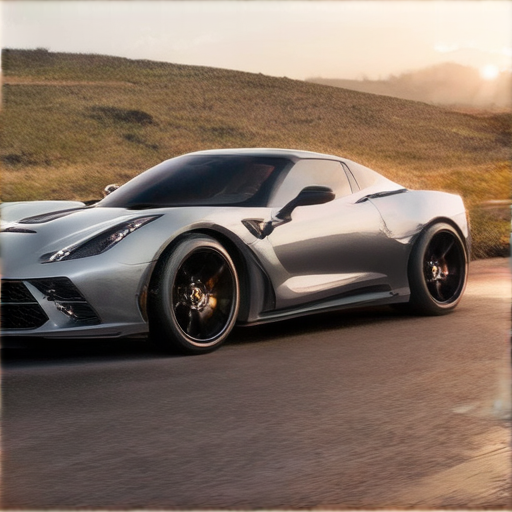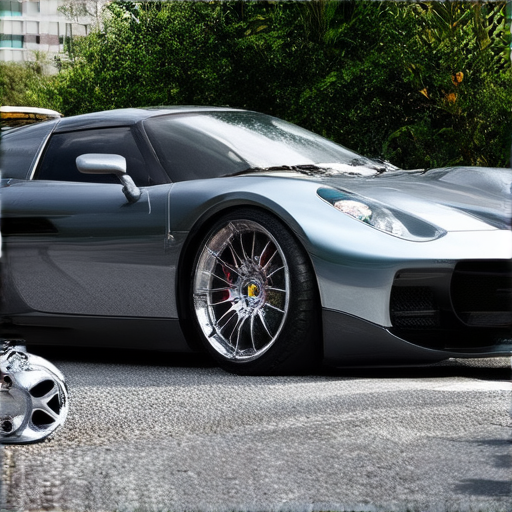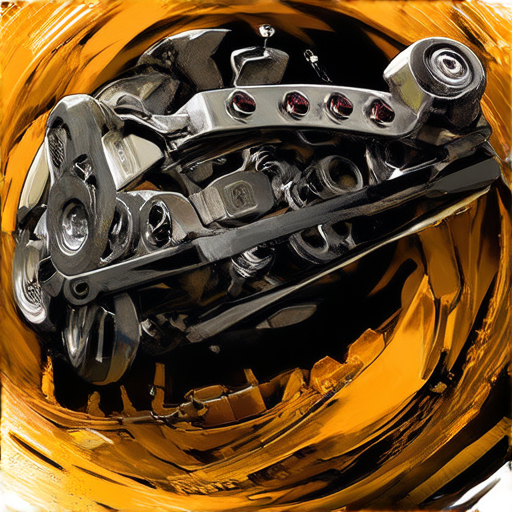When it comes to personalizing and protecting your vehicle’s wheels, there are numerous options available in the market, making it challenging to decide which one suits your needs best. Car wheel covers, often confused with hubcaps, serve multiple purposes, including aesthetic appeal, functional benefits, and cost-effectiveness. In this comprehensive guide, we will delve into the world of wheel covers, exploring their types, benefits, and practical uses, as well as providing valuable insights into choosing the right ones for your car.

Car Wheel Covers: What They’re Called
We often refer to the protective coverings on our car wheels as hubcaps, but what exactly are they called?
-
Hubcaps vs. Hub Caps
- A hubcap or hub cap is a decorative disk on an automobile wheel that covers at least the central portion of the wheel, known as the hub.
- While the terms “hubcap” and “hub cap” are often used interchangeably, the latter is sometimes used to describe a more extensive covering that encompasses the entire wheel.
Types of Car Wheel Covers
-
Fender Skirts
- Fender skirts are a type of car wheel cover that extends from the front to the rear of the vehicle, typically made of plastic or metal.
- They are designed to protect the underside of the car from road debris and improve aerodynamics.
Other Types of Car Wheel Covers
-
Wheel Well Covers
- Wheel well covers are designed to fit snugly around the wheel wells of a vehicle, protecting them from dust, dirt, and moisture.
- They can be made of various materials, including vinyl, rubber, or fabric.
Why Choose Car Wheel Covers?
-
Protection from Road Debris
- Car wheel covers offer protection from road debris, such as rocks, gravel, and salt, which can damage the wheels and surrounding components.
- This helps extend the lifespan of the wheels and reduces maintenance costs.
Conclusion
In conclusion, car wheel covers are an essential component of a vehicle’s exterior, serving both functional and aesthetic purposes.
Whether you choose hubcaps, fender skirts, or wheel well covers, selecting the right type of car wheel cover can enhance your vehicle’s appearance and provide added protection from the elements.
Understanding the Difference Between Hubcaps and Wheel Covers
When it comes to protecting and styling your vehicle’s wheels, two popular options come to mind: hubcaps and wheel covers.
-
Hubcaps:
Hubcaps are designed to cover the center cap of the wheel, providing protection from dirt, dust, and other debris.
They are typically made of plastic or metal and come in various styles and designs to match your vehicle’s aesthetic.
Hubcaps can be easily removed and installed, making them a convenient option for drivers who want to customize their wheels without compromising functionality.
-
Wheel Covers:
Wheel covers, on the other hand, are designed to cover the entire face of the wheel, providing a sleek and stylish look.
They are often made of soft materials like rubber or vinyl and come in a variety of colors and patterns to suit your taste.
Wheel covers are a great option for drivers who want to add a touch of personality to their vehicle’s exterior without breaking the bank.
In addition to their aesthetic appeal, both hubcaps and wheel covers offer practical benefits, such as protecting the wheel from damage and reducing noise levels during driving.
At Incubus Wheels, we understand the importance of choosing the right wheel accessories for your vehicle.
Our team of experts is dedicated to helping you find the perfect hubcaps or wheel covers to match your style and budget.
Whether you’re looking to upgrade your vehicle’s appearance or simply want to protect your wheels from the elements, we’ve got you covered.
Contact us today to learn more about our selection of hubcaps and wheel covers and to schedule a consultation with one of our knowledgeable staff members.
We look forward to helping you find the perfect wheel accessories for your vehicle!
Some popular alternatives to consider include:
These retailers offer a wide range of wheel accessories, including hubcaps and wheel covers, at competitive prices.
Be sure to check out their websites or visit a store near you to explore their selection and find the perfect fit for your vehicle.
Remember to always choose high-quality wheel accessories that meet your needs and budget.
With the right hubcaps or wheel covers, you can take your vehicle’s style and performance to the next level.
Happy shopping!

Are Car Wheel Covers Worth It?
As a car enthusiast, I’ve often wondered whether investing in car wheel covers is worth the extra cost.
-
Car wheel covers can protect your wheels from damage caused by road debris, curbs, and other hazards.
-
They can also help reduce noise levels while driving, as well as keep your wheels clean and free from brake dust.
-
However, some people may argue that car wheel covers are unnecessary and can actually cause more harm than good.
The Pros of Car Wheel Covers:
-
Protection from Road Debris:
Car wheel covers can shield your wheels from rocks, gravel, and other sharp objects that can cause damage and scratches.
-
Noise Reduction:
Wheel covers can help dampen the sound of your wheels hitting the pavement, reducing noise levels and creating a smoother ride.
-
Easy Cleaning:
With a wheel cover, cleaning your wheels becomes a breeze – simply wipe them down with a soft cloth and mild soap solution.
The Cons of Car Wheel Covers:
-
Additional Cost:
Car wheel covers can add an extra layer of expense to your vehicle’s maintenance costs.
-
Potential Interference with Brake Performance:
Some wheel covers may interfere with your brakes’ ability to function properly, which could lead to safety issues.
-
Aesthetics:
Not everyone may find wheel covers visually appealing, which could detract from your vehicle’s overall appearance.
Alternatives to Car Wheel Covers:
-
Wheel Guards:
These are protective barriers that attach to your wheels to prevent damage from road debris.
-
Wheel Spacers:
These devices can help increase clearance between your wheels and the surrounding components, reducing the risk of damage.
Conclusion:
In conclusion, whether or not car wheel covers are worth it ultimately depends on your personal preferences and priorities.
If you value protection, ease of cleaning, and reduced noise levels, then wheel covers might be a worthwhile investment for you.
However, if you’re on a tight budget or prefer a more minimalist aesthetic, you may want to consider alternative options.
Ultimately, it’s essential to weigh the pros and cons and decide what works best for you and your vehicle.

Can You Put Wheel Covers On Any Rim?
To determine if a wheel cover can be installed, look for a lip around the outside of the wheel for the retention ring to seat in.
- If there is no lip, wheel covers may not be compatible with the rim.
- However, some wheel covers have a unique design that allows them to fit snugly onto the wheel without a lip.
Factors Affecting Compatibility:
- Rim size and style
- Wheel cover design and material
- Lip presence or absence on the rim
Checking Compatibility Before Purchase:
- Measure the diameter and width of the rim to ensure compatibility with the wheel cover.
- Check the manufacturer’s specifications for the wheel cover to confirm its suitability for the rim.
- Consult with a professional if unsure about compatibility or installation.
Installation Considerations:
- Make sure the wheel cover is properly seated and secured to prevent damage or loss during driving.
- Follow the manufacturer’s instructions for installation and maintenance.
Incubus Wheels Recommendations:
We recommend checking our website for a wide selection of wheel covers that cater to various rim sizes and styles.
Our team of experts can assist you in finding the perfect wheel cover for your vehicle, ensuring a seamless installation process.
Contact us today to learn more about our products and services!
What is the Point of Wheel Covers?
Wheel covers, also known as hubcaps, serve both functional and aesthetic purposes.
-
They protect the hub from dirt and debris, which can damage the wheel and affect its performance.
-
They also enhance the appearance of the vehicle, adding a touch of style and sophistication.
History of Wheel Covers
The earliest wheel covers were made of metal and were simply decorative covers for the hubs.
Over time, they evolved to become more functional, and today they are used to protect the hub from dirt and debris.
Types of Wheel Covers
There are several types of wheel covers available, including:
-
Steel wheel covers: These are durable and long-lasting, making them ideal for heavy-duty vehicles.
-
Aluminum wheel covers: These are lightweight and corrosion-resistant, making them perfect for high-performance vehicles.
-
Chrome wheel covers: These are stylish and eye-catching, adding a touch of luxury to any vehicle.
Benefits of Using Wheel Covers
Using wheel covers offers several benefits, including:
-
Protection from damage: Wheel covers protect the hub from dirt and debris, which can damage the wheel and affect its performance.
-
Improved appearance: Wheel covers enhance the appearance of the vehicle, adding a touch of style and sophistication.
-
Increased safety: Wheel covers can help prevent accidents by reducing the risk of wheel damage and loss.
Conclusion
In conclusion, wheel covers play a crucial role in protecting the hub and enhancing the appearance of the vehicle.
With various types of wheel covers available, there is something to suit every vehicle and owner’s needs.
By choosing the right wheel cover, owners can enjoy improved performance, increased safety, and a stylish look that turns heads on the road.

How to Properly Install Wheel Covers
We understand that installing wheel covers can seem intimidating, but with the right steps, you’ll have a sleek and stylish look in no time.
-
Step 1: Prepare Your Wheels
-
Step 2: Choose the Right Size
-
Step 3: Align the Cover
-
Step 4: Secure the Cover
-
Step 5: Check the Fit
Before installing your wheel covers, make sure your wheels are clean and free of debris. This will ensure a smooth installation process and prevent any damage to your wheel covers.
Select the correct size of wheel cover for your vehicle. Refer to our wheel sizes guide for assistance.
Place the wheel cover onto the wheel, making sure it’s centered and evenly aligned. Gently push the cover down until it clicks into place.
Lower the retention ring to the lower notch on the wheel, ensuring a snug fit. This will keep the cover securely in place.
Double-check that the wheel cover is properly seated and evenly spaced around the wheel. Make any necessary adjustments before driving.
By following these simple steps, you’ll be able to install your wheel covers like a pro. Remember to always refer to your owner’s manual for specific instructions and guidelines for your particular vehicle.
At Incubus Wheels, we’re committed to helping you find the perfect wheel covers for your vehicle. Browse our selection today and discover the difference for yourself!
For more information on wheel covers and how to choose the right ones for your vehicle, check out our wheel covers guide.
Don’t forget to visit our blog for the latest news and tips on custom wheel design, car modification, and automotive trends.

0 Comments